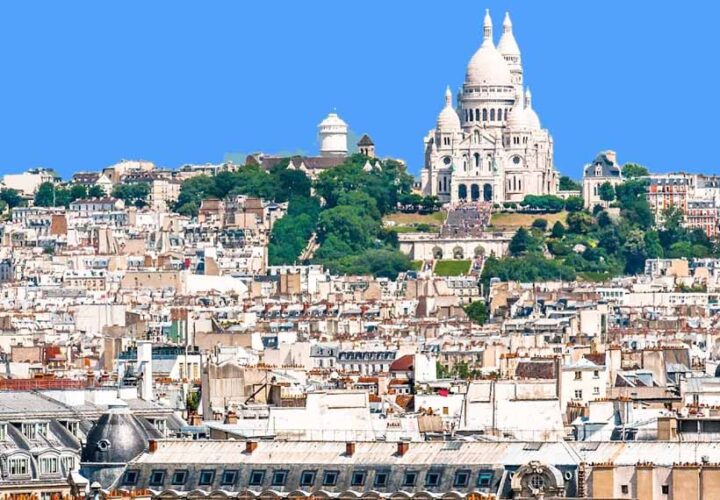Montmartre
Montmartre is a historic and vibrant neighborhood located in the 18th arrondissement of Paris, France. Montmartre has a rich artistic history and was a focal point for many renowned artists in the late 19th and early 20th centuries. The neighborhood attracted painters like Pablo Picasso, Vincent van Gogh, and Henri de Toulouse-Lautrec.
One of the most iconic landmarks in Montmartre is the Basilique du Sacré-Cœur (Basilica of the Sacred Heart). Perched on the highest point in the city, the basilica offers panoramic views of Paris. This charming square in Montmartre is known for its outdoor artists’ studios and lively atmosphere. Visitors can have their portraits drawn or purchase original artworks.
Montmartre is home to the famous cabaret, the Moulin Rouge, known for its red windmill. It has been an entertainment venue since the late 19th century.
Cobblestone Streets: The neighborhood features narrow, winding, and picturesque cobblestone streets that add to its romantic and historic charm.
Montmartre is dotted with charming cafés and restaurants, offering a variety of culinary experiences. Many of these establishments have a bohemian ambiance.
The Clos Montmartre vineyard is one of the few remaining vineyards in Paris. Located on the slopes of Montmartre, it produces a limited quantity of wine each year.
Montmartre has retained a bohemian atmosphere, attracting both locals and tourists seeking a more artistic and relaxed environment.
The neighborhood is home to numerous art galleries showcasing contemporary and traditional artworks.
While the Moulin Rouge is the most famous, Montmartre was historically dotted with windmills, some of which are still visible today.
Montmartre’s unique character, artistic heritage, and stunning views make it a popular destination for visitors exploring Paris. Its blend of history, art, and culture continues to attract people from around the world.
Montmartre is talking about Parisians the way New Yorkers talk about the Village: It’s not what it’s used to, it’s like Disneyland, the artists can not afford to live here. There is some truth these opinions, but there are two ways of approaching this incredibly unique village within the metropolis.
The first is to follow the herd instinct and stampede your way up the famous hill, take a picture of yourself on the steps of the basilica, buy an overpriced crepe at the Place du Tertre, get acquainted with your sketched portrait, and walk back gaudy t-shirts, postcards, gaudy t-shirts.



